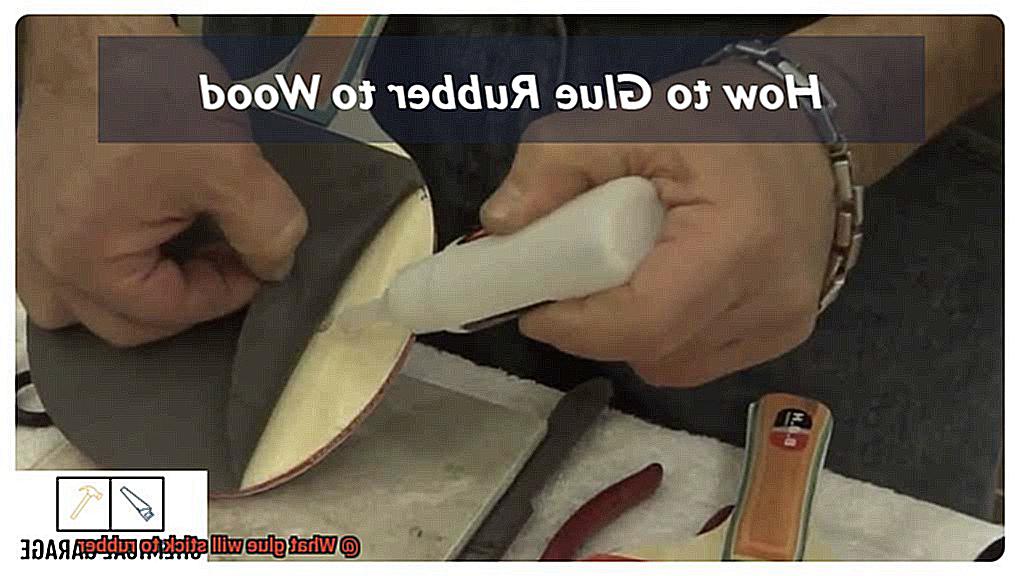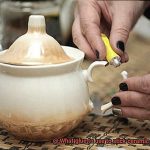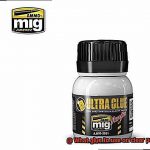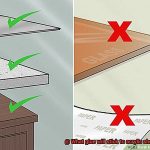Ever been in a sticky situation, desperately searching for a way to mend or create something with rubber? Whether it’s your trusty sneakers falling apart, a pesky rubber seal that won’t stay put, or an ambitious art project that requires some serious sticking power, finding the right glue for rubber can be a maddening challenge. But fret not, my friend. We’ve got the lowdown on all things adhesive to save you from your glue-related woes.
In this captivating blog post, we’re diving headfirst into the world of glues and exploring the vast array of options available. Prepare to have your mind blown as we uncover the secrets of finding the perfect adhesive that will stick like glue to rubber. Get ready for a rollercoaster ride through bonding agents and prepare to revolutionize your DIY projects.
With riveting anecdotes and sage advice from experts in the field, we’ll be taking an up-close look at the main types of glue that work wonders on rubber. From the versatile charms of contact adhesive and the go-to reliability of super glue, to the impressive bonding capabilities of epoxy and the specialized craftiness of rubber cement – no stone will be left unturned.
But wait. Which glue reigns supreme? Join us on this gripping journey as we dissect each adhesive’s strengths and weaknesses. We’ll shine a spotlight on their resilience, longevity, and ease of use so you can make an informed decision. Brace yourself for invaluable tips and tricks that guarantee successful bonding while tackling common challenges head-on.
So if you’ve ever pondered which glue will stick to rubber, my friend, consider this blog post your ultimate handbook. Get ready to unlock the secrets behind adhesion and unleash your creative genius knowing that the perfect rubber adhesive is just a few words away. Let’s dive in.
What is Rubber?
Contents
- 1 What is Rubber?
- 2 What Glue Should I Use for Rubber?
- 3 Cyanoacrylate Adhesive (Super Glue)
- 4 Epoxy Glue
- 5 Silicone-Based Adhesives
- 6 Specialized Rubber Adhesives
- 7 Surface Preparation for Bonding Rubber
- 8 Tips and Tricks for Using Glue on Rubber
Rubber is a remarkable substance that permeates our daily lives, offering a multitude of uses and applications. Derived from the sap of the rubber tree, scientifically known as Hevea brasiliensis, rubber is a natural polymer with incredible versatility.
Stretchy and resilient, rubber possesses the unique ability to return to its original shape even after being stretched or deformed. This elasticity makes rubber perfect for products like bouncy balls, elastic bands, and, most notably, tires. Its outstanding resistance to wear and tear also ensures durability, making it suitable for countless industrial applications.
But that’s not all – rubber has another extraordinary quality: it repels water. This hydrophobic property makes it ideal for creating waterproof materials such as raincoats, boots, and plumbing seals. Additionally, rubber serves as an excellent insulator of both heat and electricity, finding its place in electrical wires, insulation materials, and hot water bottles.
While natural rubber is widely used, synthetic rubber has also made its mark. Produced through chemical processes using petroleum-based raw materials, synthetic rubber offers similar properties to natural rubber but can be tailored to specific requirements. It finds applications in manufacturing industries for products like hoses, gaskets, and conveyor belts.
The production of rubber involves several steps. After collecting the latex from the rubber tree, it undergoes a process called coagulation where chemicals are added to solidify the liquid into a mass. The coagulated mass is then rolled into sheets and dried. This results in the formation of raw rubber sheets that can be further processed into various forms.
Rubber’s significance extends across numerous industries due to its unique properties and versatility. From automotive to medical, construction to fashion, rubber finds its place in countless products. Ensuring successful bonding with other materials is crucial, and choosing the right glue becomes paramount.
Cyanoacrylate adhesive, commonly known as super glue, is often recommended for bonding rubber. This glue forms an instant and durable bond with rubber surfaces. However, it is important to select a cyanoacrylate adhesive specifically formulated for rubber, as general-purpose super glues may not adhere as effectively.
Epoxy glues, known for their exceptional bonding strength, also work well with rubber. They can effectively bond rubber to various materials like metal, plastic, and wood. To achieve optimal adhesion, it is essential to clean the rubber surface thoroughly and remove any oils or contaminants.
What Glue Should I Use for Rubber?
If you’ve ever wondered about the magical glue that can hold rubber together, look no further. Rubber, with its bouncing and stretching abilities, has become an integral part of our lives. But when it comes to bonding rubber materials, choosing the right glue is absolutely essential. And lucky for you, I am here as your trusted expert to guide you through this sticky situation.
Let’s dive into the world of glue and discover the different types that can effectively bond rubber materials. First up, we have the superhero of adhesives – cyanoacrylate adhesive, also known as super glue. This remarkable glue bonds quickly and strongly, creating a connection that can withstand extreme temperatures and harsh conditions. However, not all super glues are suitable for rubber bonding, so make sure to choose one specifically designed for rubber.
Moving on to another powerful option – epoxy adhesive. This adhesive consists of two components that need to be mixed together before use. With its exceptional strength and resistance to water, heat, and chemicals, epoxy adhesives are perfect for bonding rubber to other materials like metal or plastic.

But wait, there’s more. Rubber cement is a fantastic choice if you’re looking for flexibility and a strong bond. It’s a contact adhesive that requires both surfaces to be coated with the adhesive and left to dry before joining them together. Rubber cement is versatile and ideal for various rubber applications.
Now, if you’re tackling heavy-duty projects or working in industrial settings, specialty adhesives like neoprene-based adhesives are your best bet. These adhesives are specifically formulated for bonding rubber materials and boast impressive resistance against temperature changes, moisture, and chemicals. When strength and durability are paramount, these adhesives deliver.
Before you embark on your gluing adventure, heed these important considerations. Always read the instructions provided by the manufacturer to ensure proper usage of the glue. Different types of rubber may require specific adhesive formulations or preparation techniques for optimal bonding results. Don’t skip the crucial step of surface preparation – clean and roughen the rubber surface to ensure a solid adhesion.
Lastly, keep your project requirements in mind. Consider the desired strength of the bond, environmental conditions, and the types of surfaces you’re bonding. Consulting with an adhesive specialist or referring to manufacturer guidelines will ensure that you select the perfect glue for your rubber bonding needs.
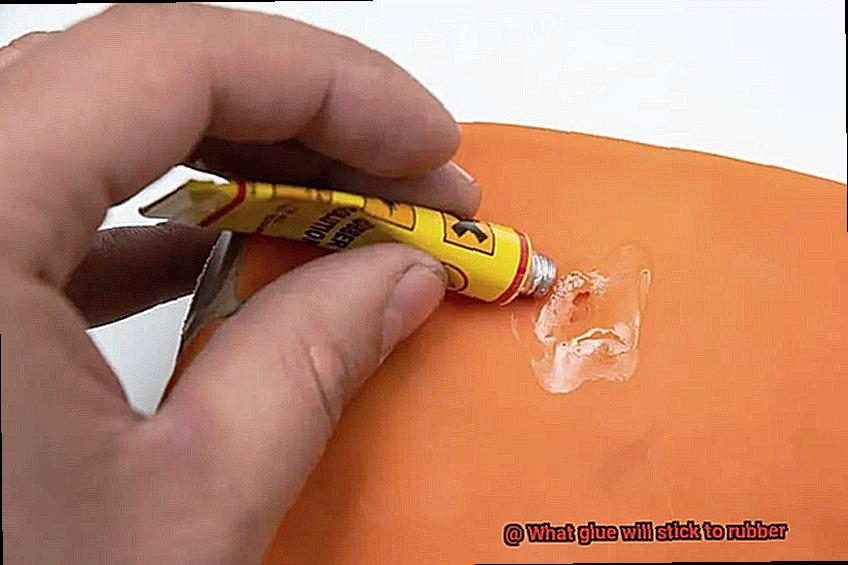
Cyanoacrylate Adhesive (Super Glue)
If you’re looking to create an unbreakable bond with rubber materials, this fast-acting adhesive is your trusty sidekick. In this section, I’ll equip you with all the knowledge you need to harness the power of super glue and conquer any bonding challenge.
Let’s start with the basics. Super glue is renowned for its ability to form a strong and durable bond between surfaces. Its secret lies in a chemical reaction triggered by moisture. When this adhesive encounters even the tiniest hint of moisture, it unleashes its power and creates a bond that can withstand the forces of nature.
But before we dive into the world of super glue, we must prepare our rubber battlefield. Cleanliness is crucial for success, so ensure that your rubber surface is free from any contaminants or moisture. We want our super glue to work its magic without any interference. Grab a clean cloth and wipe away any unwanted particles, leaving behind a pristine surface ready for bonding.
Now, let’s add a touch of finesse to our preparation. Before applying the super glue, give the rubber surface a gentle roughening. A few strokes with sandpaper or a file will create tiny grooves on the surface, providing more area for the adhesive to grip onto. Think of it as giving your rubber materials an extra boost of adhesion superhero strength.
With our preparation complete, it’s time to unleash the power of super glue. Remember, less is more. Apply the adhesive sparingly to avoid unsightly messiness. A thin, even layer across the surface will suffice. Then, press the rubber surfaces together firmly and hold them in place for a few precious seconds. This allows the adhesive to set and work its magic.
Super glue is no ordinary adhesive; it works at lightning speed. Within seconds, you’ll witness the bond forming before your very eyes. However, patience is still a virtue. Give the adhesive up to 24 hours to fully cure and reach its maximum strength. During this time, treat your bonded masterpiece with care, avoiding any undue stress or strain. Let the adhesive solidify undisturbed, ensuring a bond that can withstand the test of time.
Epoxy Glue
Prepare to embark on a thrilling journey into the world of epoxy glue, where rubber materials find their perfect match. In this guide, we will uncover the advantages and secrets of using epoxy glue to create unbreakable bonds. Get ready to conquer any challenge and become a master of rubber bonding.
Advantages of Epoxy Glue for Rubber Bonding:
The Dynamic Duo: Unleashing Two-Part Magic:
The secret to epoxy glue’s legendary strength lies in its two-part composition. By combining a resin and a hardener, this adhesive creates a bond that is both robust and long-lasting. Bid farewell to feeble connections as you witness the birth of an unyielding partnership between rubber materials.
Unyielding Adhesion: Forged in the Fires of Bonding Battles:
Defying expectations, epoxy glue fearlessly embraces the challenge of bonding rubber surfaces. Its exceptional adhesion ensures a tight and secure hold, fortifying rubber materials as they unite into an unstoppable force. Witness the transformation as your rubber becomes an impenetrable fortress.
Temperature Resistant: Defying Nature’s Whims:
In the face of Nature’s caprices, epoxy glue stands tall and unyielding. Whether it be scorching summers or bone-chilling winters, this adhesive laughs in the face of extreme temperatures. No matter the weather, rest assured that your bonded rubber will remain steadfast against all odds.
Chemical Conqueror: Conquering Industrial Battlegrounds:
Within the treacherous realm of industrial settings, chemicals lie in wait, ready to sabotage your bonds. But fear not. Epoxy glue boasts exceptional chemical resistance, effortlessly repelling oils, solvents, and other industrial chemicals. With this adhesive by your side, your rubber bond will triumph over all challenges.
Proper Use of Epoxy Glue for Rubber Bonding:
Choose the Right Epoxy: Unleash the Perfect Match:
Not all epoxy glues possess the power to bond rubber effectively. To achieve unrivaled results, select a specialized epoxy adhesive formulated explicitly for rubber materials. These hidden gems often contain additives that enhance bond strength and flexibility on rubber surfaces, ensuring a connection that defies all expectations.
Silicone-Based Adhesives
In our previous section, we embarked on an extraordinary journey through the world of epoxy glue and its conquest of rubber materials. Today, prepare to be captivated by the unparalleled abilities of silicone-based adhesives – the superheroes of rubber bonding. Get ready to discover the advantages and techniques that make silicone-based adhesives the unbeatable solution for bonding rubber surfaces.
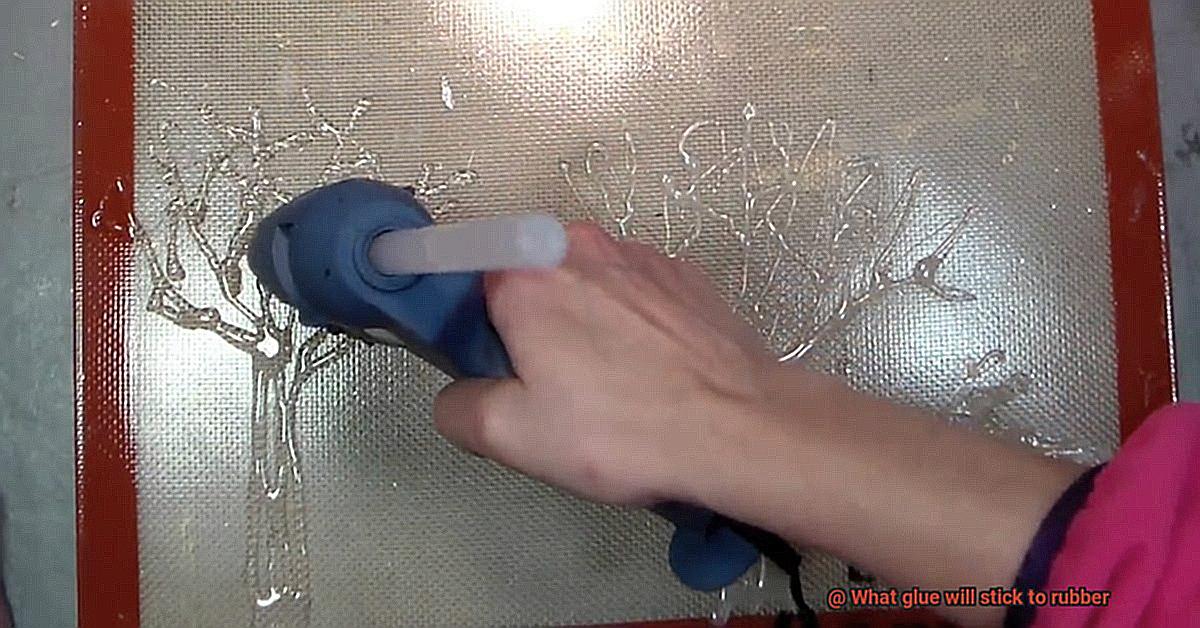
Advantages of Silicone-Based Adhesives:
- Versatility: Picture an adhesive that fearlessly bonds various rubber materials, from natural rubber to synthetic rubber and even silicone rubber. Look no further than silicone-based adhesives. Whether it’s gaskets, seals, O-rings, or other rubber components, these adhesives are up for any challenge.
- Heat, Moisture, and Chemical Resistance: Brace yourself for extreme temperatures and harsh environments because silicone-based adhesives thrive in those conditions. They form unshakable bonds that withstand scorching heat, relentless moisture, and corrosive chemicals. No matter what your rubber parts encounter, these adhesives won’t let you down.
Application Techniques:
- Surface Preparation: As with any adhesive adventure, proper surface preparation is paramount to achieving optimal adhesion. Before applying silicone-based adhesive, ensure that the rubber surface is pristine. Banish oils, dirt, and dust using a suitable solvent or cleaner for an impeccable bond.
- Mixing Components: Behold the two components of silicone-based adhesives – the base and the curing agent. These partners in bonding need to be mixed thoroughly according to the manufacturer’s instructions. Only then will you unleash their combined power for a flawless bond.
- Applying the Adhesive: Armed with your perfectly balanced adhesive concoction, it’s time to apply it onto the rubber surface with finesse. Like a seasoned pro, use a brush or spatula to distribute the adhesive evenly. Remember, adhere to the manufacturer’s guidelines on application techniques and ratios for the ultimate results.
- Curing Time: Now, let the adhesive work its magic. To achieve an unbreakable bond, join the bonded parts together and secure them with clamps while the adhesive cures. Patience is key, as curing time can vary based on the specific adhesive and environmental conditions. Give it the time it needs to create an unwavering connection.
Specialized Rubber Adhesives
These remarkable adhesives are specially formulated to bond rubber materials together, creating an incredibly strong and durable bond that can withstand even the most demanding applications. Let’s delve into the different types of specialized rubber adhesives and the key factors to consider when choosing one.
First in line are the solvent-based adhesives. These adhesives contain volatile organic compounds (VOCs) that evaporate during the curing process, leaving behind a powerhouse bond. Solvent-based adhesives are the superheroes of rubber bonding, fearlessly adhering rubber to various substrates like metal, wood, and plastic. They conquer any challenge that comes their way, forming bonds that can withstand the toughest conditions.
Next up are the water-based adhesives. These environmentally friendly adhesives do not contain VOCs and offer excellent adhesion to rubber surfaces. They are particularly suitable for applications where solvent-based adhesives may not be ideal, such as in the automotive industry. While they may not have superpowers like their solvent-based counterparts, they still get the job done with finesse and reliability.
But wait, there’s more. Some specialized rubber adhesives come in the form of two-part epoxy systems. These systems consist of a resin and a hardener that need to be mixed before application. Once combined, this adhesive forms an unbreakable bond that can withstand heat, chemicals, and moisture. It’s like having a dynamic duo working together to save the day.
It is important to note that not all rubber adhesives are created equal. Different types of rubber have distinct surface properties, requiring specific adhesives for optimal bonding. Natural rubber, with its high surface energy, can effectively bond with a wide range of adhesive types. On the other hand, synthetic rubbers like EPDM or silicone may require more specialized adhesives due to their low surface energy. It’s like matching superheroes with their perfect sidekicks, ensuring the best bonding performance.
When selecting a specialized rubber adhesive, several factors should be considered. Temperature resistance, flexibility, and chemical resistance should be at the top of your checklist. You need an adhesive that can withstand the heat of battle, adapt to any situation, and conquer any chemical attack. By carefully considering these factors, you will ensure that your adhesive is ready for action and capable of delivering outstanding performance.
Surface Preparation for Bonding Rubber
If you want to achieve super-strong bonds that can withstand any challenge, surface preparation is the secret ingredient. Think of it as the foundation for an incredible adhesive adventure. Here are the essential steps for achieving optimal surface preparation when bonding rubber:
- Clean the surface: Just like superheroes need a clean canvas, adhesives require a pristine surface to work their magic. Start by using a mild detergent or soap solution mixed with water. Grab a soft brush or sponge and gently scrub away any dirt, dust, oil, or grease that might hinder the bonding process. Rinse off any soap residue with clean water and ensure the rubber is completely dry before continuing.
- Defeating stubborn grease: For heavily contaminated or greasy rubber surfaces, we have a powerful solution – literally. Solvent-based cleaners like acetone or isopropyl alcohol will be your trusty sidekicks. Apply these mighty solvents to dissolve and remove grease and oil from the rubber’s surface. But beware. Some types of rubber can be weakened by solvents, so always test a small, inconspicuous area first to avoid any unintended consequences.
- Roughen up the surface: Time to add some texture to your rubber. Grab sandpaper or an abrasive pad and gently sand the surface in a circular motion. This will create a slightly rough texture that allows the adhesive to grip onto the rubber tightly. Remember, don’t go overboard with the sanding – we want to maintain the integrity of the rubber.
- Strip away barriers: If your rubber surface has been previously coated or has a glossy finish, it’s time to remove that protective layer before bonding. You can choose between chemical paint strippers or good old-fashioned mechanical means like scraping or sanding. By eliminating this barrier, you allow the adhesive to work its magic directly on the rubber.
- Temperature and humidity considerations: Just like superheroes thrive in specific environments, adhesives also have preferences. Check the instructions of your chosen adhesive for its specific temperature and humidity requirements. Adhere to these conditions to achieve the best results and ensure a successful bond.
Tips and Tricks for Using Glue on Rubber
Are you ready to unlock the secrets of bonding rubber? Rubber is a versatile material, but finding the right glue can be a challenge. Fear not. Today, we unveil expert tips and tricks that will help you achieve powerful and enduring bonds with glue on rubber. Get ready to elevate your projects to new heights.
The Right Glue for the Job:
Just as a superhero needs the perfect tool to save the day, rubber demands the right adhesive. Various glues excel at bonding rubber, including cyanoacrylate adhesive (super glue), epoxy adhesive, silicone adhesive, and specialized rubber adhesives. Each possesses unique qualities that make it ideal for securing rubber surfaces.
Pristine Preparation:
Before diving into gluing rubber, meticulous surface preparation is key. Banish dirt, dust, and grease by diligently cleaning the rubber. Deploy soap and water or rubbing alcohol to cleanse every nook and cranny. Remember, a thoroughly dry surface is essential before proceeding.
Precision in Application:
Now comes the moment to apply the glue. Ensure an even and thin layer of adhesive across the rubber surface. This meticulous distribution guarantees comprehensive coverage, maximizing bond strength. Depending on your chosen glue, applying it to both the rubber and the surface you wish to attach it to may be necessary.
Patience for Perfect Drying:
Once the glue has been applied, grant it the necessary time to perform its alchemy and dry completely. Drying times vary based on glue type; therefore, heeding the instructions on the packaging is paramount. Avoid any temptation to touch or exert pressure on the glued surfaces until they have achieved full dryness. This patience fortifies the bond, ensuring unwavering strength.
Fortify with Clamps or Weights:
In certain scenarios, particularly when working with larger or heavier objects, employing clamps or weights can bolster the bond between rubber and the glued material. By securing the glued surfaces in place as the adhesive dries, you impart added resilience to the bond. It’s akin to empowering the glue with Herculean strength.
The Ultimate Test:
Once the glue has undergone its transformative drying process, it’s time to put the bond to the ultimate test. Give those glued parts a gentle tug or apply some pressure to assess their tenacity. If they hold firm, congratulations. You have successfully merged rubber and adhesive into a unified force. However, should any weak spots or areas of vulnerability emerge, fear not. You possess the power to reapply glue or reinforce the bond with stitching or an additional material—unleashing unparalleled strength.

